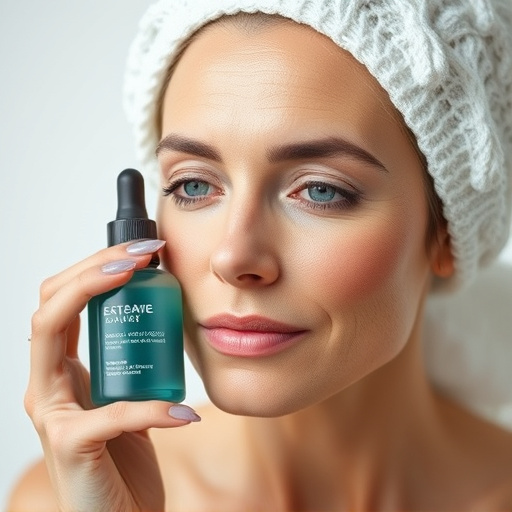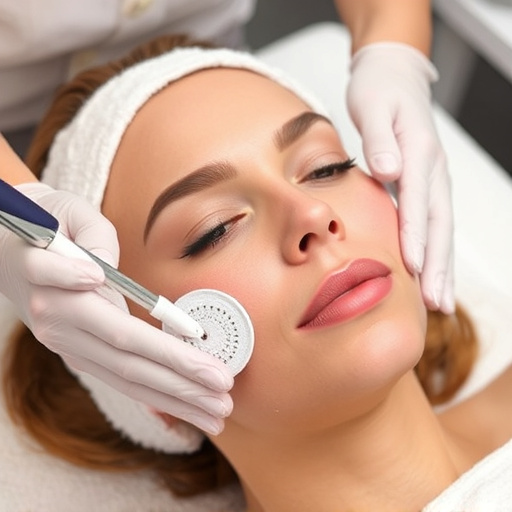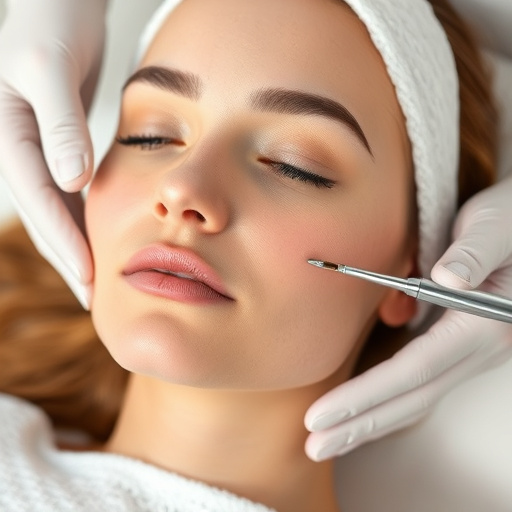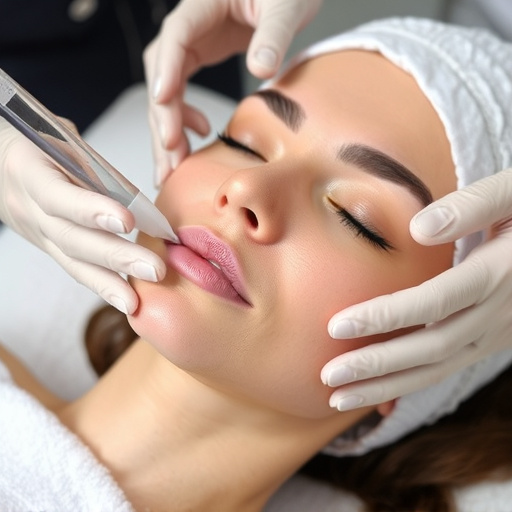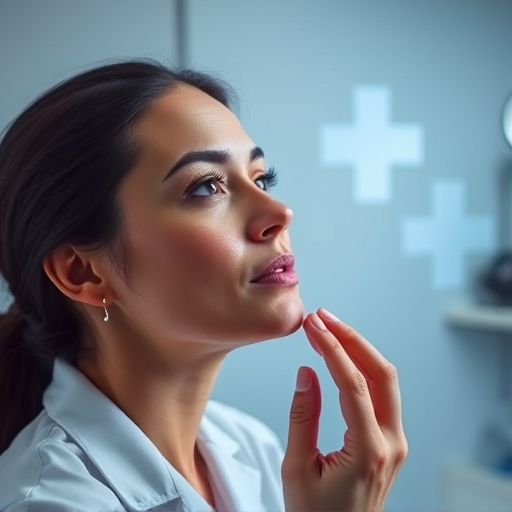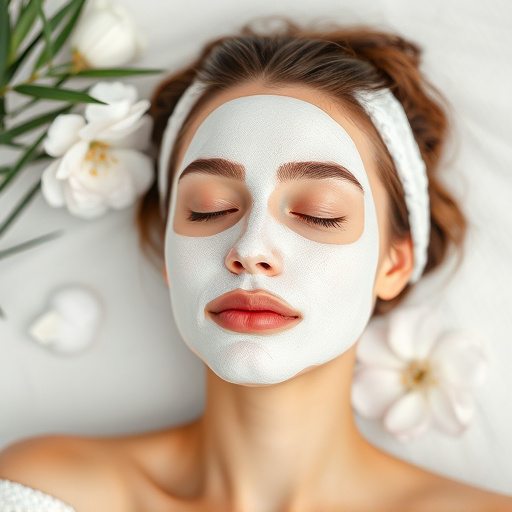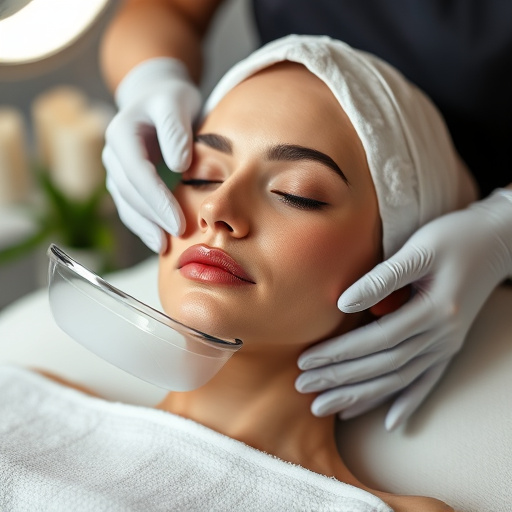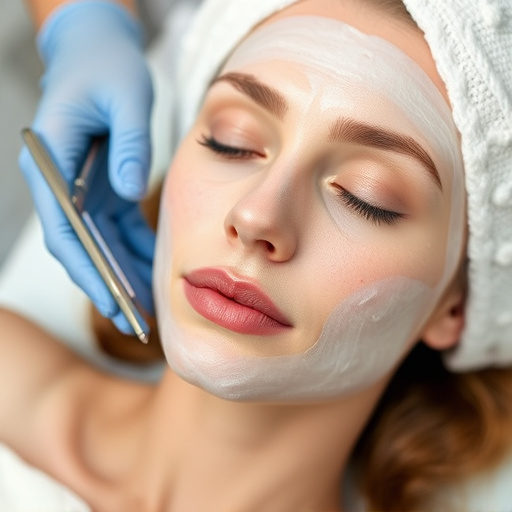Hyperpigmentation, caused by melanin overproduction, can be treated naturally with ingredients like vitamin C and aloe vera. At-home remedies are safe but require patch tests and sun protection. Consistency and professional guidance from spa services enhance results, offering a holistic approach to achieving healthier skin.
Looking for effective hyperpigmentation treatment? This guide explores natural at-home alternatives to address discolored skin patches safely. Hyperpigmentation, caused by increased melanin production, can impact your skin’s appearance and confidence. Understanding its causes is key, from sun exposure to inflammation. We delve into gentle remedies like lemon juice, almond oil, and aloe vera, offering practical tips for incorporating them into your skincare routine. Learn best practices for safe use and achieve a more even complexion naturally.
- Understanding Hyperpigmentation Causes and Its Impact
- Exploring Natural Remedies for At-Home Treatment
- Safe Practices and Tips for Effective Pigment Inhibitors
Understanding Hyperpigmentation Causes and Its Impact

Hyperpigmentation is a common skin concern that occurs when melanin, the pigment responsible for giving our skin its color, becomes overproduced in certain areas. This excess melanin leads to dark spots or patches on the surface of the skin, often appearing as freckles, age spots, or post-inflammatory hyperpigmentation. While it can be a cosmetic worry for many, understanding the causes and impact of hyperpigmentation is crucial for effective treatment.
Several factors contribute to the development of hyperpigmentation, including sun exposure, skin injuries, certain medications, and even hormonal changes. Prolonged UV radiation from the sun is a primary trigger, as it damages the skin cells responsible for melanin production and distribution. This results in an uneven skin tone and can be particularly pronounced in areas more exposed to sunlight, such as the face, hands, and arms. Other forms of skin trauma, like acne scars or surgical incisions, can also lead to hyperpigmentation. Additionally, certain medical conditions and cosmetic procedures, including chemical peels and microneedling therapy, may cause temporary or permanent hyperpigmentation if not managed carefully.
Exploring Natural Remedies for At-Home Treatment

When it comes to tackling hyperpigmentation, many individuals are turning to natural remedies as a safer and more accessible alternative to over-the-counter or clinical treatments. Exploring at-home options can be an appealing approach to achieving clearer, brighter skin while avoiding potential side effects of harsh chemicals. One of the key benefits of these natural remedies is their ability to soothe and nourish the skin, promoting overall skin health and a more even complexion.
Common ingredients like vitamin C, honey, lemon juice, and aloe vera have gained popularity for their skin-brightening properties. These substances not only help in fading hyperpigmentation but also work towards enhancing the skin’s natural radiance and elasticity. Incorporating these natural elements into your skincare routine can be a gentle and effective way to manage and improve hyperpigmentation, making it an attractive choice for those seeking sustainable anti aging treatments without the risks associated with stronger pharmaceutical options.
Safe Practices and Tips for Effective Pigment Inhibitors

When exploring hyperpigmentation treatment with at-home alternatives, prioritizing safety is paramount to maintaining and improving skin health. Always conduct a patch test before incorporating any new product into your routine to ensure it doesn’t cause irritation or allergic reactions. Additionally, be mindful of sun exposure while using pigment inhibitors, as these products may make your skin more susceptible to UV damage. Regularly using sunscreen with at least SPF 30 is crucial for protecting your skin and preventing further darkening.
For effective results, consistency is key. Stick to a regular application schedule, usually once or twice daily, depending on the product’s instructions. Also, consider combining these at-home treatments with medical spa services tailored to your specific needs, such as chemical peels or microdermabrasion, which can enhance their benefits. Remember, while at-home alternatives offer accessibility and convenience, professional guidance can be invaluable in achieving optimal skin health and managing conditions like acne, providing a holistic approach to your hyperpigmentation treatment journey.
In conclusion, understanding the causes of hyperpigmentation and exploring safe at-home alternatives can significantly improve your skin’s appearance. Natural remedies, when combined with proper practices, offer effective pigment inhibitors without the risks associated with harsh chemicals. By adopting these strategies, you can achieve a more even complexion and say goodbye to unsightly hyperpigmentation.


